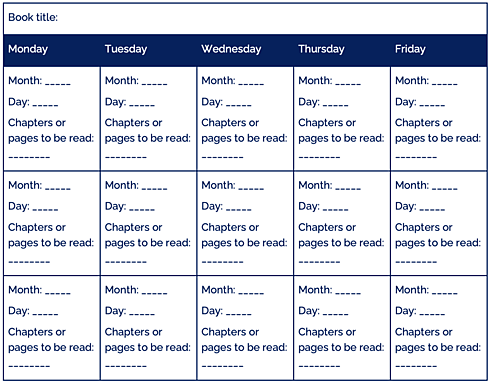Learning Objectives
- Engage in community discussions about books
- Identify important aspects of books for discussion
- Recognize reading as a process
- Respond to books in various ways
- Understand the author’s relationship with their text and readers
Why is it important to read different types of books? How do your personal experiences and personality affect how you understand a story? How do an author’s choice of words and mood reflect their attitude toward the subject? How does the history of a book affect its meaning? What deeper messages are hidden within a story? How are themes supported throughout a book?
Note: This can be a whole‐class read, book club, or choice book based on a theme. See the list for more information and options.
Taking time to create a reading/pacing calendar with the students allows them to take ownership of their reading progress by giving them a deadline for when the book should be finished and then letting them determine how many pages a week, a day, etc., they’ll be reading.
Before starting, review norms from the first lesson in this unit or use that lesson to discuss and create norms before proceeding.
Here are some examples, although it is important to note that students should create these norms as a class.
Let’s create a reading schedule together. This helps us take charge of our reading by setting deadlines and pacing ourselves.
If it helps, give students premade, blank calendars like the one below so that they can fill in their own reading schedule:

Students may need help thinking about what they’ve got going on in other classes to determine how many pages they should read each day or each week.
Because students have just started reading, ask questions that get them thinking about the book. For example:
These questions can be used at the end of class to bring the topics of the day’s lessons together: